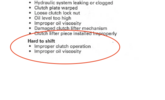Hello
I'm Juanda. First post around here. I recently bought a Honda ST1300 (2005). It's a pleasure to ride on the highway. I don't get to ride it often but the few times I do have been nice. Especially on the highway (except for the freaking tolls).
As I drive it more often, I find more things about it I don't understand. To be precise:
For the second issue, I didn't find anything so I'll create a separate post soon enough.
And the third issue is what I'd like to be the focus of this post.
It's my first bike with a hydraulic clutch so maybe this is a normal thing and I'm just not familiar with it. Once the bike is running, it changes gears smoothly. However, when starting from a stop, sometimes the gears don't engage. Trying to force them doesn't help. Eventually, I realized the way to do it was to release the clutch lever and try a second time. On the second time, it does perfectly fine. It's not a big issue but it's annoying having to press the clutch twice to achieve normal operation and I doubt this is the intended use. Besides, I now live in Italy and drivers here can get very impatient on the road so I'm a little anxious about engaging neutral on red lights in case I have issues later or it takes me too long to get back in movement.
By the way, the bike engages the neutral gear without issues. It's just coming out of it that's troublesome.
To emphasize again, the sequence usually goes as follows.
Thanks in advance
I'm Juanda. First post around here. I recently bought a Honda ST1300 (2005). It's a pleasure to ride on the highway. I don't get to ride it often but the few times I do have been nice. Especially on the highway (except for the freaking tolls).
As I drive it more often, I find more things about it I don't understand. To be precise:
- Windshield issues
- Squeaky noise related to the wheel rotation
- Problems going from Neutral to 1st or 2nd gear
For the second issue, I didn't find anything so I'll create a separate post soon enough.
And the third issue is what I'd like to be the focus of this post.
It's my first bike with a hydraulic clutch so maybe this is a normal thing and I'm just not familiar with it. Once the bike is running, it changes gears smoothly. However, when starting from a stop, sometimes the gears don't engage. Trying to force them doesn't help. Eventually, I realized the way to do it was to release the clutch lever and try a second time. On the second time, it does perfectly fine. It's not a big issue but it's annoying having to press the clutch twice to achieve normal operation and I doubt this is the intended use. Besides, I now live in Italy and drivers here can get very impatient on the road so I'm a little anxious about engaging neutral on red lights in case I have issues later or it takes me too long to get back in movement.
By the way, the bike engages the neutral gear without issues. It's just coming out of it that's troublesome.
To emphasize again, the sequence usually goes as follows.
- I'm stopped in neutral.
- Press the clutch lever all the way in.
- Push for 1st (or 2nd) gear.
- The gear doesn't engage and the bike stays in neutral no matter how hard you push it.
- Release the clutch lever.
- Press the clutch lever all the way in again.
- Push for 1st (or 2nd) gear.
- The gear engages fine and I can restart movement.
Thanks in advance

